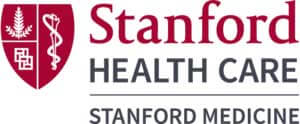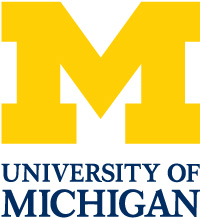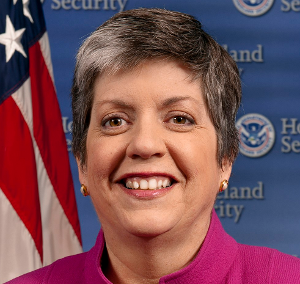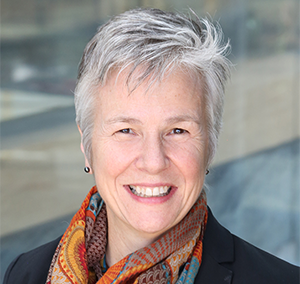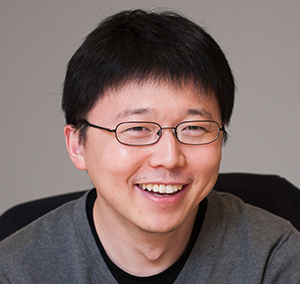Q: What led you to the discovery of CRISPR?
A: In fact, it was a process of several steps: My long-term goal, first in my lab at the Max F. Perutz Laboratories in Vienna, Austria and later at Umeå University in Sweden, was to find interesting mechanisms in bacteria which can be harnessed for new anti-infectives or for genetic technologies (to target genomes and their expression). First, we identified tracrRNA, a component in the bacterium Streptococcus pyogenes that led us to the CRISPR-Cas immune system. In a second step, we were able to understand how the CRISPR-Cas and tracrRNA components work together in the cell to target the DNA. In the end, we could immediately harness this bacterial system into what is now known as the CRISPR-Cas9 technology.
Q: Can you describe some of the initial challenges you faced in understanding how the CRISPR system works?
A: When we first became interested in the CRISPR-Cas9 system, it was clear that we had to use both a genetic and a biochemical approach to understand how the components we had identified work together to provide an immune system for the bacteria. We were quite fortunate because my lab already had established methodologies, protocols and strategies at hand, which we could apply and develop further for our CRISPR-Cas9 research.
I would not say that we faced particular obstacles, only challenges that biologists encounter naturally when they want to understand molecular and cellular mechanisms in detail. My research on CRISPR-Cas9 involved a lot of brain-storming and a methodological approach that combined theoretical frameworks and several back-up plans. But in fact, the process of discovery from the understanding of the CRISPR-Cas9 mechanism to the harnessing of the mechanism into the CRISPR-Cas9 technology was way more exciting than challenging per se.
Q: Coming from an academic background, how was your experience of co-founding a company to exploit the methodology for gene therapy, CRISPR Therapeutics?
A: Although first and foremost I am a scientist, I am fully aware of the responsibility that comes with our discovery and the potential of the CRISPR-Cas technology. I believed very early on that CRISPR-Cas would be promising for a large number of applications, especially for the development of therapies for patients suffering from serious genetic diseases. This has led me to co-found CRISPR Therapeutics together with Shaun Foy and Rodger Novak. I am not involved in any operational duties, but I am very happy to witness the rapid progress of the company in the field of immuno-oncology and in the development of cure for two hemoglobinopathies, Sickle Cell Disease and β-Thalassemia.
Q: What is your favorite CRISPR application?
A: The CRISPR-Cas technology is extremely versatile. For this reason, it was adapted in thousands of labs around the world where scientists are applying the technology for the basic understanding of mechanisms of life in a large diversity of cells and organisms and are working on potential future applications. I find the technology particularly interesting for the development of therapeutic measures against serious genetic diseases, that are based on genetic disorders, but also cancer or infectious diseases. CRISPR-Cas is also very attractive for agricultural research, e.g. to engineer future crops that are more resistant to the climate changes.
Q: What are your views on the ethical concerns surrounding CRISPR applications?
A: CRISPR is a very powerful tool, and as such the technology has attracted private interest, e.g. when it comes to human enhancement. Using CRISPR-Cas9 in human germlines is problematic, but some recent publications already show how far scientists have already come. There is a need for more discussions and international regulations about the potential risks of CRISPR-Cas9 as a gene-editing technology. As scientists, we also bear a certain responsibility: We need to make sure that appropriate safety and efficacy measures for any potential therapy that involve patients are taken and that any use of the technology that is ethically questionable is prohibited.
Nevertheless, I think that it is crucial to go forward with the technology for research purposes because it gives us the opportunity to understand important mechanisms of life and diseases.
Q: What other research themes your lab at the Max Planck Institute for Infection Biology is working on?
A: In our lab, we focus on fundamental mechanisms of regulation in processes of infection and immunity in Gram-positive bacterial human pathogens. We are interested in understanding how RNAs and proteins control cellular processes on the transcriptional, post-transcriptional and post-translational level. We study regulatory RNAs and proteins in various biological pathways such as horizontal gene transfer, adaptation to stress, physiology, persistence, virulence, infection and immunity. In particular, we do research on interference systems in the defense against genetic elements (CRISPR-Cas), on small regulatory RNAs that interfere with pathogenic processes, on protein quality control that regulates bacterial adaptation, physiology and virulence, on basic principles of DNA replication and its role for life and on bacterial and vesicular interactions with host innate immunity.
Q: What advice can you give to young scientists considering academic research career?
A: Never lose your curiosity!
Be authentic!
Safeguard your freedom!
Basic science requires a lot of patience, dedication and commitment. It is not an easy profession. Our research on CRISPR-Cas9 that was to successfully convert principles discovered in basic science into a technology with broad applications shows why it is worthwhile to keep going and follow your research ideas, even though experiments may go wrong or there may be frustrating times. But basic research is also about curiosity and the unique chance to work in international, dynamic, fruitful and interactive environments, share the passion for learning, knowledge and discovery, and always challenge oneself. For these reasons, it is very important to motivate and encourage future generation of researchers because the world needs many gifted and passionate scientists to answer the many open questions remaining in the life sciences.
The Precision Medicine World Conference (PMWC), in its 17th installment, will take place in the Santa Clara Convention Center (Silicon Valley) on January 21-24, 2020. The program will traverse innovative technologies, thriving initiatives, and clinical case studies that enable the translation of precision medicine into direct improvements in health care. Conference attendees will have an opportunity to learn first-hand about the latest developments and advancements in precision medicine and cutting-edge new strategies and solutions that are changing how patients are treated.
See 2019 Agenda highlights:
- Five tracks will showcase sessions on the latest advancements in precision medicine which include, but are not limited to:
- AI & Data Science Showcase
- Clinical & Research Tools Showcase
- Clinical Dx Showcase
- Creating Clinical Value with Liquid Biopsy ctDNA, etc.
- Digital Health/Health and Wellness
- Digital Phenotyping
- Diversity in Precision Medicine
- Drug Development (PPPs)
- Early Days of Life Sequencing
- Emerging Technologies in PM
- Emerging Therapeutic Showcase
- FDA Efforts to Accelerate PM
- Gene Editing
- Genomic Profiling Showcase
- Immunotherapy Sessions & Showcase
- Implementation into Health Care Delivery
- Large Scale Bio-data Resources to Support Drug Development (PPPs)
- Microbial Profiling Showcase
- Microbiome
- Neoantigens
- Next-Gen. Workforce of PM
- Non-Clinical Services Showcase
- Pharmacogenomics
- Point-of Care Dx Platform
- Precision Public Health
- Rare Disease Diagnosis
- Resilience
- Robust Clinical Decision Support Tools
- Wellness and Aging Showcase
See 2019 Agenda highlights:
- Five tracks will showcase sessions on the latest advancements in precision medicine which include, but are not limited to:
- AI & Data Science Showcase
- Clinical & Research Tools Showcase
- Clinical Dx Showcase
- Creating Clinical Value with Liquid Biopsy ctDNA, etc.
- Digital Health/Health and Wellness
- Digital Phenotyping
- Diversity in Precision Medicine
- Drug Development (PPPs)
- Early Days of Life Sequencing
- Emerging Technologies in PM
- Emerging Therapeutic Showcase
- FDA Efforts to Accelerate PM
- Gene Editing / CRISPR
- Genomic Profiling Showcase
- Immunotherapy Sessions & Showcase
- Implementation into Health Care Delivery
- Large Scale Bio-data Resources to Support Drug Development (PPPs)
- Microbial Profiling Showcase
- Microbiome
- Neoantigens
- Next-Gen. Workforce of PM
- Non-Clinical Services Showcase
- Pharmacogenomics
- Point-of Care Dx Platform
- Precision Public Health
- Rare Disease Diagnosis
- Resilience
- Robust Clinical Decision Support Tools
- Wellness and Aging Showcase
- A lineup of 450+ highly regarded speakers featuring pioneering researchers and authorities across the healthcare and biotechnology sectors
- Luminary and Pioneer Awards, honoring individuals who contributed, and continue to contribute, to the field of Precision Medicine
- 2000+ multidisciplinary attendees, from across the entire spectrum of healthcare, representing different types of companies, technologies, and medical centers with leadership roles in precision medicine


